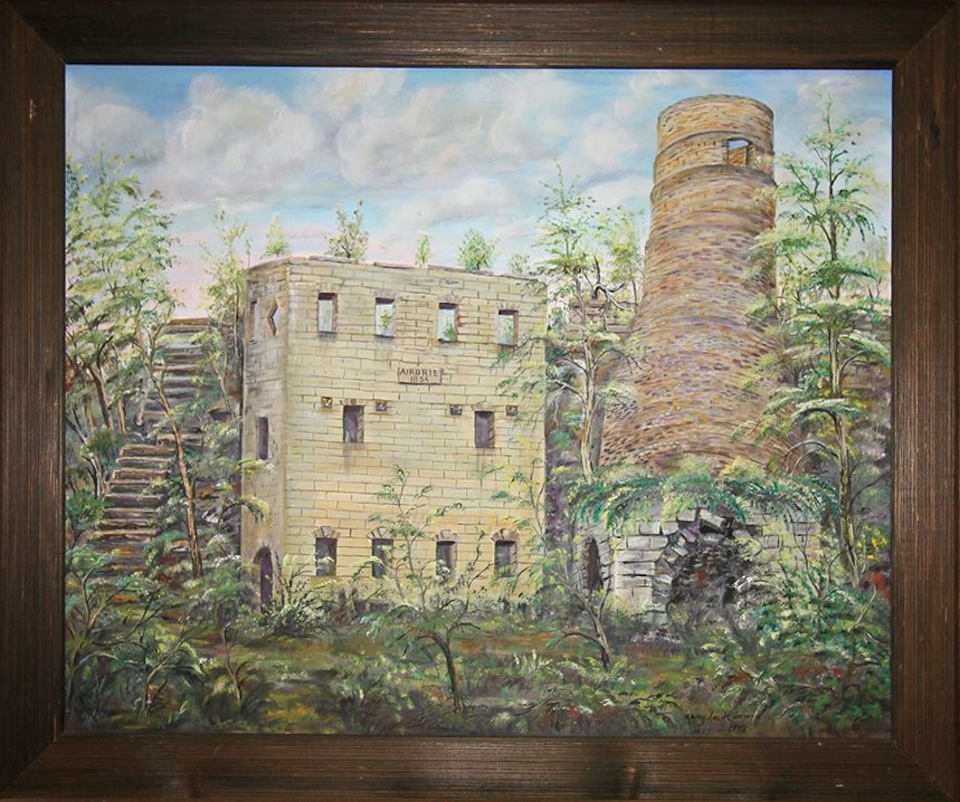
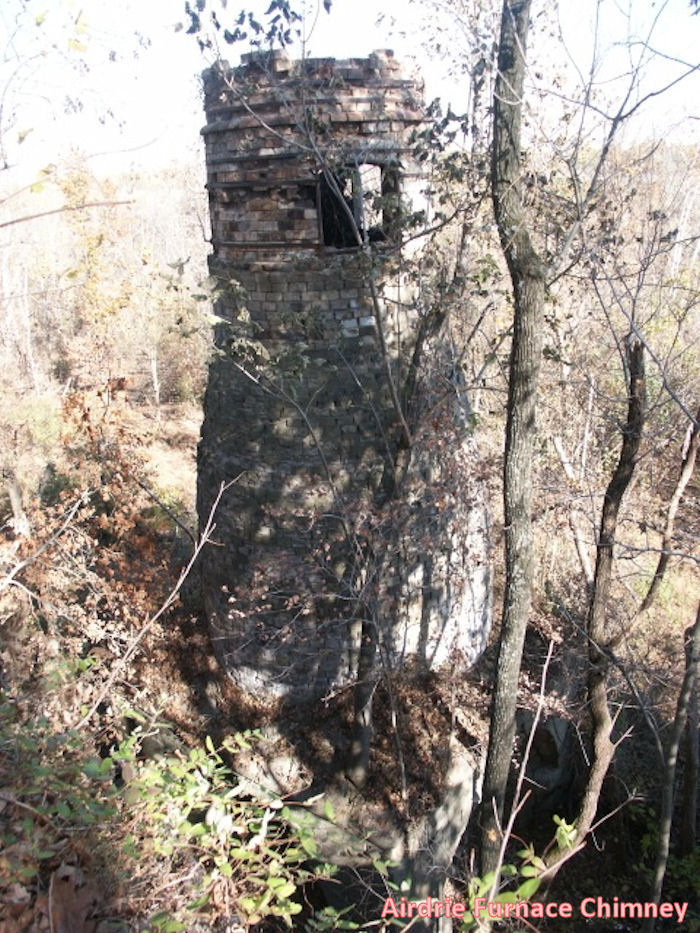
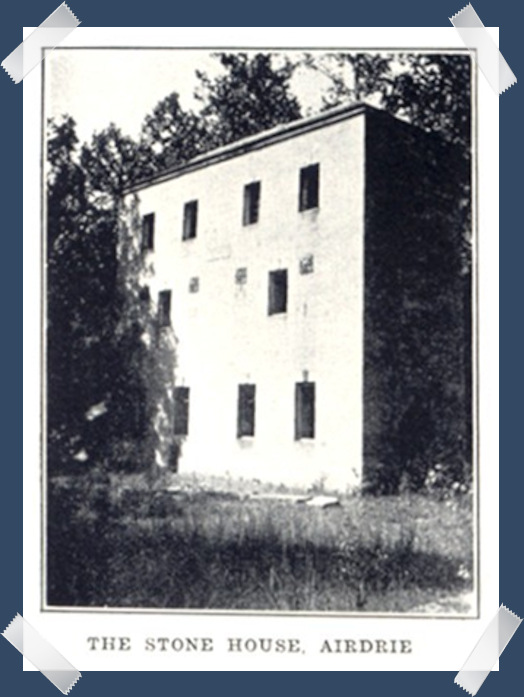
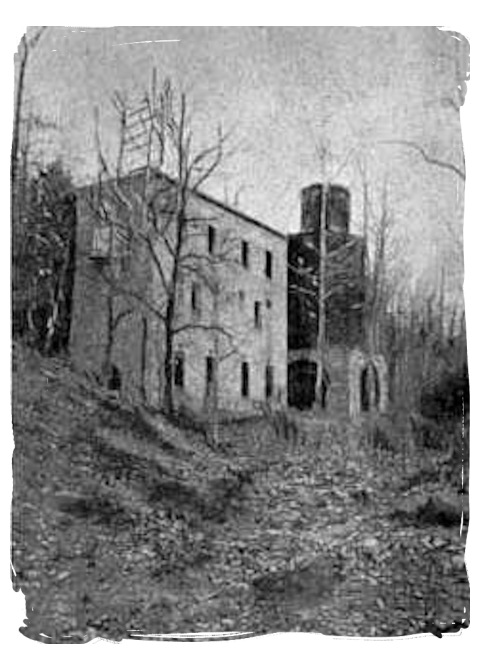
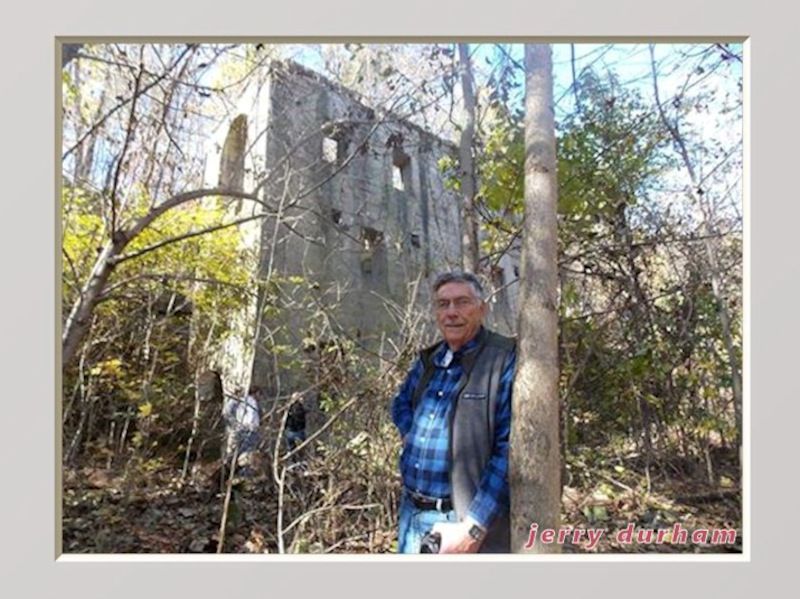
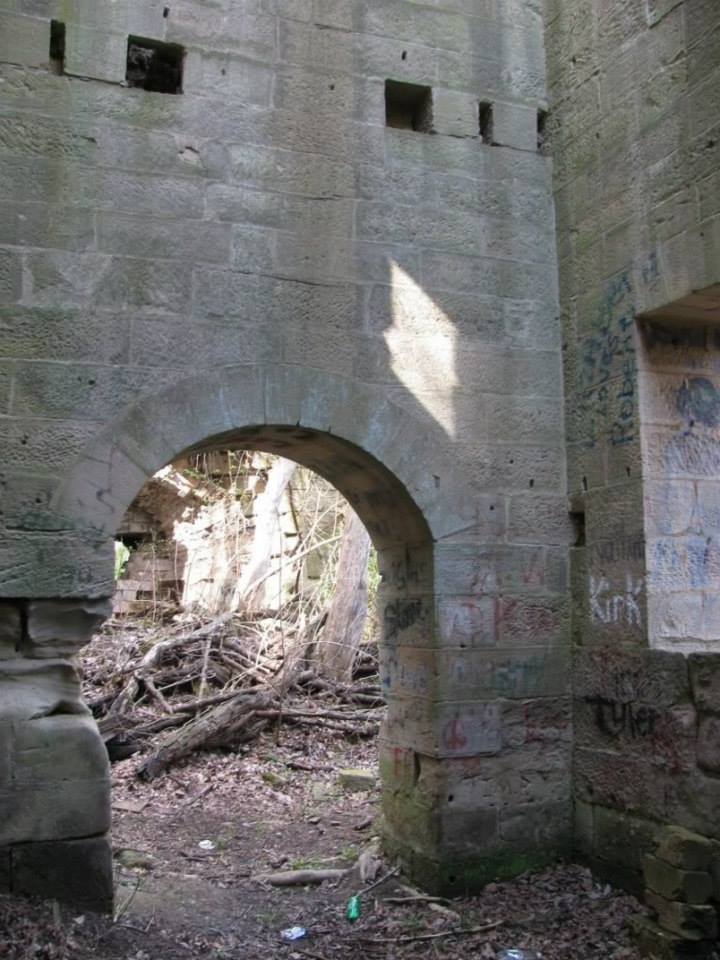
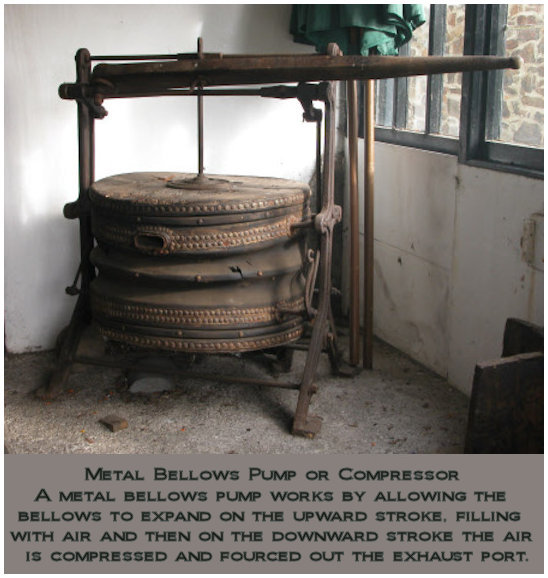
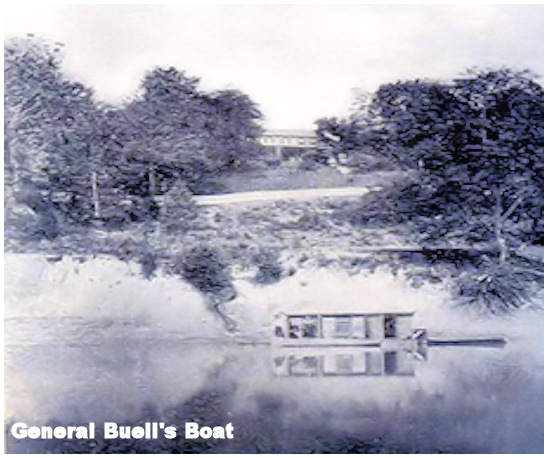
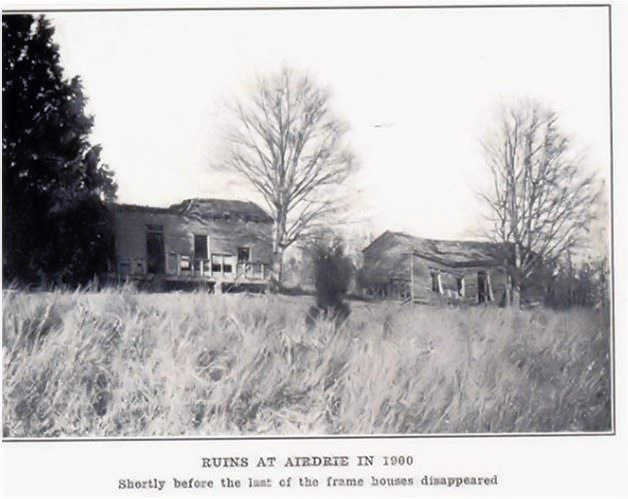
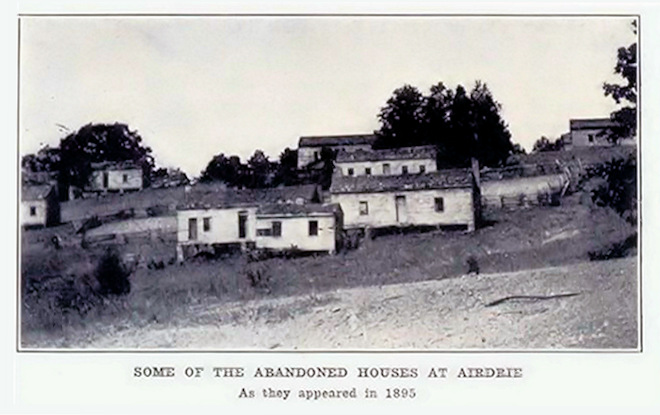
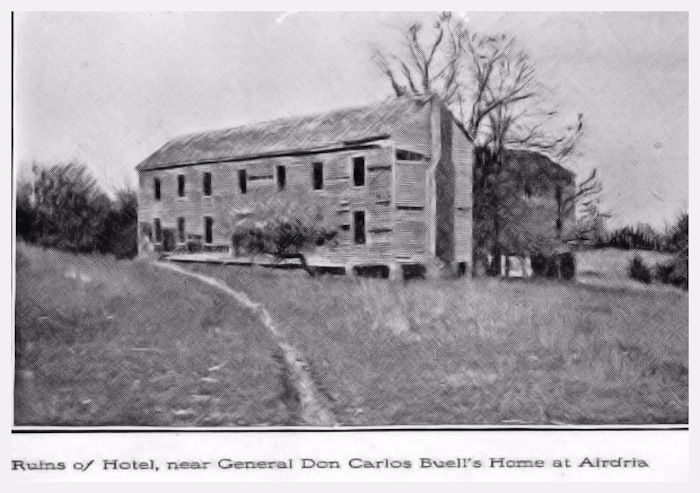
The Furnace:
Guess of all of the structures built in the Airdrie Compound, the Old Airdrie Furnace has to be the most unique. This magnificent old structure made of stones and bricks was built before the American Civil War started. Some ten years before the Civil War started, Lord S. C. A. Alexander, a Scotchman, invested $350,000 to continue a dream of his to build an iron ore foundry. He picked an area on a bluff some 100 yards or so from the Green River. This selected area held enough raw materials to build the foundry, as well as a supply of iron ore, and a coal seam with more than enough coal to fire the furnace and the powerhouse. The rock formations in that area were plentiful and all that was needed was manpower to transform the raw material into an iron ore smelter. Lord Alexander persuaded some two hundred or more hard working and talented Scotchmen to join him in his endeavor. For two years, or so, these miners, masons, carpenters, machinist, smelters, and other craftsmen, needed for this unique undertaking, worked as a team and turned this vast wilderness into a place where raw material could be mined and transformed into iron. The built structure must have been a beautiful sight when completed and made ready for "Firing Of The Furnace". The "Stack" rested on a foundation that comprised the furnace. Together, the unit rose about fifty feet from the ground level to just above the bluff. Coal, iron ore, and limestone were transported to the top of the stack and dumped into two side openings. These side openings were at bluff-top level and some ten feet or so below the top of the stack. Near ground level, four or more small openings provided access to the lower furnace. Two small openings were used to blow compressed air into the lower combustion chamber for a hotter and somewhat controllable fire. A small "Tap" allowed the molten slag in the bottom reservoir to be removed and another lower "Tap" or gate allowed the molten iron to be drained into containers called "Pigs". A larger access opening allowed entry into the furnace during down time for cleaning, inspection and such. All and all, a marvel in the mid nineteenth century.The Stone House:
The Stone Building has been called by a lot of different names such as Stone House, Stone Building, Equipment House, Power House and even a Prison, but suspect that this three story shelter was used to house a metal bellows air pump, a small machine shop, other equipment and storage. The bottom floor is open with a support wall between the outside walls at about the second floor level. This division wall was used for support of the two longer outside walls. A cross member or beam could have been supported on this connecting wall with one end being attached to a bellows pump and the other end attached to a prime mover. A two bellows pump, one on each end, is also possible, but doubt that the furnace needed that much air. The prime mover for this air pump could have possibly been a steam engine. More likely the air pump was powered by a gang of men either with levers or crank wheels. The third floor and parts of the second floor were probably used for storage and maybe a machine type shop. I have done a lot of guessing on this stone building and any help would be appreciated. Even you idea would help.The River:
With Airdrie being located just a hundred yards or so above the Green River there must have been some means of river transportation, surely a boat dock, an access ramp and a method of getting water from the river to the 200 or so workers and their families. The hilltop households had to have water in some form or fashion. I am not sure if any rocks were ever loaded on a boat from Airdrie, but other materials must have been brought in by boat. I suspect an access ramp to the river existed although I have never seen any evidence of that other than at the old Paradise access road to the river. This is where the old ferry crossed and is probably where the river access port for Airdrie was located. Horse or mule drawn water wagons were probably driven to the river edge, containers loaded with water, and then taken back up hill to the housing complex and to the furnace site. Water was needed for the furnace as well, and if the air pump used a steam engine, a plentiful water source would have to have been available. Of course, water purification, as we know it, did not exist. Life in the the mid-nineteenth century! It was rough.Living Areas:
Just above the Airdrie bluff, the land sloped upward for several hundred more feet, and on the very top of the hill stood the mansion. Even before Lord Alexander purchased the several thousand acres for the Airdrie Foundry compound, the previous owners had built a large house that overlooked the river valley. William McLean built this big house and enjoyed living on this beautiful setting. After the land purchase, Lord Alexander converted this nice big home into a mansion and he lived here for the next few years. During the construction phase of the Airdrie Furnace, twenty-five of so houses were built on the sloping hillside between the mansion and the furnace site. A large hotel was also built. After the Airdrie Furnace failures and Lord Alexander giving up on a foundry, the compound was shut down and Alexander moved to the Lexington area. He placed the property in the hands of a trustee, "Squire" Roll, a well know farmer in the area. "Squire" Roll, was overseeing the Alexander property when General Carlos Buell worked out a deal with the Alexander Heirs and eventually became the owner of the mansion, the compound and a thousand acres or so. He added to the mansion making it even more of a true mansion and also made it more of a pristine setting by doing extensive landscaping. General Buell brought has wife to the mansion to live until she died. After Buell's wife died, the general continued to live in the mansion until he died in 1898. While Lord Alexander only lived on the property for a few years, General Buell lived at Airdrie for 32 years. The mansion burned a few years after Buell's death and from that point on the deterioration of the houses and the motel soon brought all to the ground. To this day, the furnace and the Stone Building stand.









